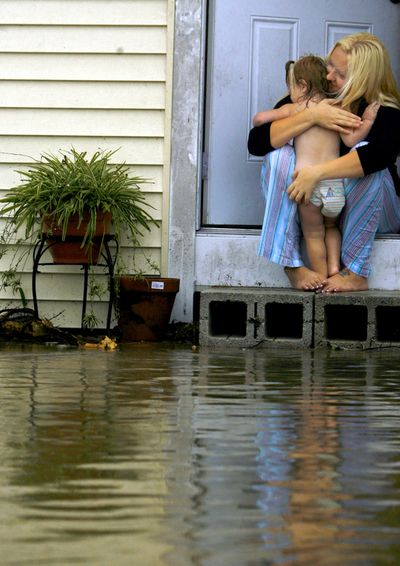Fay gains strength after coming ashore in Florida

Tropical Storm Fay surprised forecasters as it gained strength and became better organized over land Tuesday, a rare feat that could cause more damage and further disrupt travel across the Southeast.
After grazing the Florida Keys, Fay blew into the Gulf of Mexico, then hit land early Tuesday south of Naples. It is expected to develop into a hurricane with sustained winds of at least 74 mph after it enters the Atlantic Ocean early today. National Hurricane Center meteorologist Rebecca Waddington said Fay would then turn back west and make landfall along the Florida-Georgia border.
That potential triple-hit of Florida led Gov. Charlie Crist to call it a “boomerang storm.”
The storm forced more than 400 flight cancellations Monday and Tuesday in Florida, according to Federal Aviation Administration spokeswoman Kathleen Bergen. She said disruptions will continue across the Southeast as Fay goes across the state.
Orlando International Airport had more than 200 cancellations alone on Tuesday, airport spokeswoman Carolyn Fennell said.
Across the state, 18 counties declared a state of emergency, 31 counties reported school closings and more than 114,000 residents were without power late Tuesday, according to the Florida Division of Emergency Management.
That level of damage surprised many as Fay made landfall Tuesday with 60 mph winds.
Tropical storms usually lose power once they make landfall because warm, tropical waters fuel them. Waddington said the Florida Everglades and its abundance of water may have helped Fay gain power. By Tuesday afternoon, it had increased to 65 mph and had developed an eyewall.
The last time forecasters at the National Hurricane Center remembered a storm gaining power over land was Hurricane Danny in 1997. “We didn’t expect it to weaken very much, though we certainly didn’t expect it to strengthen,” Waddington said.